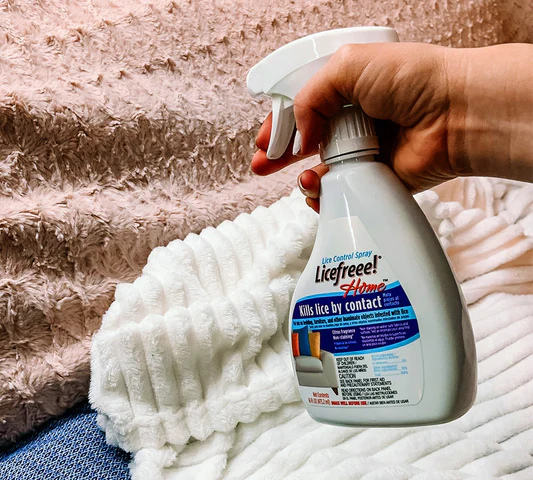
When Can I Wash My Hair After Lice Treatment?
Dealing with head lice can be overwhelming, especially when avoiding reinfestation. A common question arises: "When can I wash my hair after lice treatment?" Knowing the proper timeline and procedures for hair washing after lice treatment is crucial to ensure the treatment is effective and to prevent reinfestation.
How Soon Can I Wash My Hair After Lice Treatment?
Once your lice treatment is completed as per the instructions, you can resume washing your hair like normal. Be sure to check the instructions included before applying any treatment. For Licefreee products, we typically recommend waiting for your hair to dry naturally if using Licefreee Spray, or allowing one hour after applying Licefreee Gel.
Post-Treatment Hair Care
You can resume washing your hair after treatment. However, it's essential to use a gentle shampoo that won't strip away any residual treatment and will help protect against reinfestation. This is where the Licefreee Everyday Shampoo comes into play.
The Best Lice Shampoo
Licefreee Everyday Shampoo is designed to be used after lice treatment to help prevent reinfestation and keep your hair clean.
Licefreee Everyday Shampoo is a powerful ally in the fight against head lice. This product is specifically designed to be used after lice treatment, offering a gentle yet effective way to ensure lice do not return. The shampoo contains sodium chloride, an active ingredient that eliminates any remaining lice and deters new infestations.
One of the standout features of Licefreee Everyday Shampoo is its non-toxic formulation. Unlike some harsh chemical treatments, this shampoo is safe for daily use by all family members six months and older, making it an ideal choice for ongoing protection. Regular use of Licefreee Everyday Shampoo provides continuous defense, particularly during head lice outbreaks at school or in the community.
Using Licefreee Everyday Shampoo
Incorporating Licefreee Everyday Shampoo into your hair care routine is straightforward. After completing your lice treatment, you can begin using the shampoo to wash your hair. For optimal results, it's advisable to use the shampoo daily, especially if there has been a recent lice outbreak in your area. Additionally, to prevent the spread of lice within your household, ensure that all family members use Licefreee Everyday Shampoo, particularly if one member has been treated for lice.
Final Tips for Post-Treatment Care
Regular checks are vital even after treatment and the use of preventative shampoo. Consistently inspect your child's hair for signs of lice. Cleaning and hygiene are equally important; ensure that all bedding, clothing, and personal items are thoroughly cleaned to prevent lice from spreading. In some cases, a follow-up lice treatment may be necessary, so consult the instructions on your lice treatment product or a healthcare professional for advice.
Understanding Lice Treatment
Head lice treatments typically involve a pediculicide—a shampoo or lotion designed to kill lice. These treatments can vary in their instructions, so it's essential to follow the guidelines provided with your specific product. Generally, after applying the lice treatment, it is recommended to leave it on for a certain period before rinsing it out. The duration for which you should avoid washing your hair after this initial rinse can differ based on the treatment used.
How to Confirm a Lice Infestation
Before you even begin treatment, confirming that you or your child has a lice infestation is crucial. Misdiagnosing can lead to unnecessary treatment and stress. Here are steps to accurately identify a lice infestation:
- Inspect the Scalp: Use a fine-toothed comb to part the hair and examine the scalp and hair shafts under good lighting. Lice are tiny, the size of a sesame seed, and can be challenging to spot. Look for live lice moving around, which is a clear sign of infestation.
- Check for Nits: Nits are lice eggs and are often easier to spot than live lice. They are small, oval-shaped, and usually yellow or white. Nits attach firmly to the hair shaft, close to the scalp, and can sometimes be mistaken for dandruff. However, unlike dandruff, nits do not flake off easily.
- Use a Lice Comb: A fine-toothed lice comb can help detect and remove lice and nits. Comb through small sections of hair from the scalp to the ends, wiping the comb on a white tissue after each pass to check for lice and nits.
- Symptoms to Watch For: Persistent itching, red bumps on the scalp, neck, and shoulders, and the sensation of something moving in the hair are common symptoms of lice infestation.
If you confirm the presence of lice or nits, it's time to proceed with treatment.



